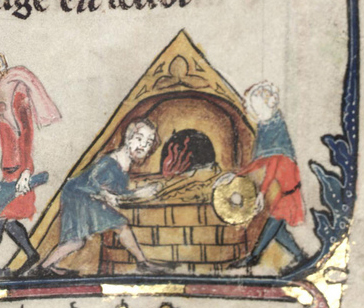Some of us have recently returned from a trip in northern Germany, where we visited Bergen am Rügen, Stralsund (including the Nikolaikirche and the Kulturhistorische Museum), Bad Doberan and the Doberaner Münster (including King Albrecht’s resting place) plus Rostock with the museum in Kloster zum Heiligen Kreuz (including effigies of Rostock knights and burghers). It was a good trip with loads of laughs, some beer and good food. It was a good opportunity for some of our members to actually see the king and to get a taste of the wholesome German cuisine!
Feuerwerkbuch
Good article, plus links, on the early 15th century Feuerwerkbuch.
Early artillery in Scandinavia
This article, written by the archaeologist Sven Rosborn, tell the story about early artillery in our part of the world.
Fabulous collection of pictures of early handgonnes
Have a look at the pictures in this forum! Many of these gonnes were unknown to me, which kind of made my day, although I believe that certain care has to be taken when accepting the different datings of the respective handgonnes.
Slow burning powder?
This forum hosts a very interesting discussion on the firing of handgonnes; the theory is that the finely ground black powder burns slow enough to enable the shooter to ignite it and then aim the handgonne.
Die Geschützdarstellungen des Walter de Milemète von 1326/7
This very meticious article (in German) also concerns the Milemete guns. Although my German is only limited, I found it to be very interesting.
Fitting round pegs into square holes?
Another interesting article on the earliest firearms. The author tries to prove that the earliest types of cannons, like the Loshult gun, were used in the siege of Eltz castle in 1331-1333.
Cool page about the earliest cannons
I came across this page when surfing: The Milemete Guns. It contains an analysis of the pot-de-fers known from Walter de Milemete’s De Nobilitatibus, Sapientis, et Prudentia Regum. It’s well worth a read if you are into handgonnes like us!
Speaking of medieval clay ovens…
I came across this free, downloadable publication on how to build traditional clay ovens – it will come in handy when we finally decide to build one for the company! Plus, there are loads of other resources on the web, such as these: The Bread Oven: Symbol of Colonial Liberty/A Large Clay Oven, Building and Using a Medieval-Style Hemispherical Bake Oven and The clay oven – how to build a clay oven in eight steps. The page even includes pizza recipes!


